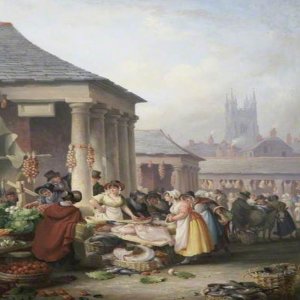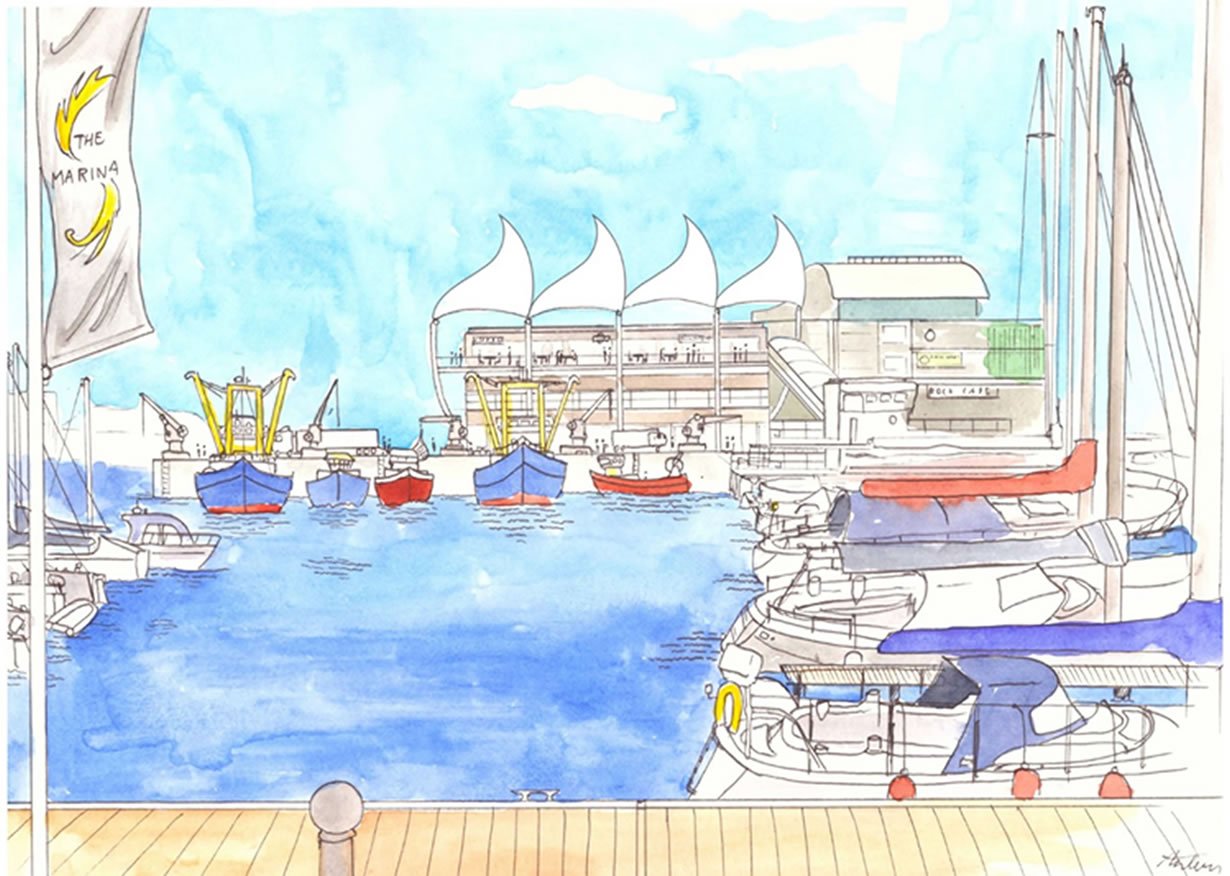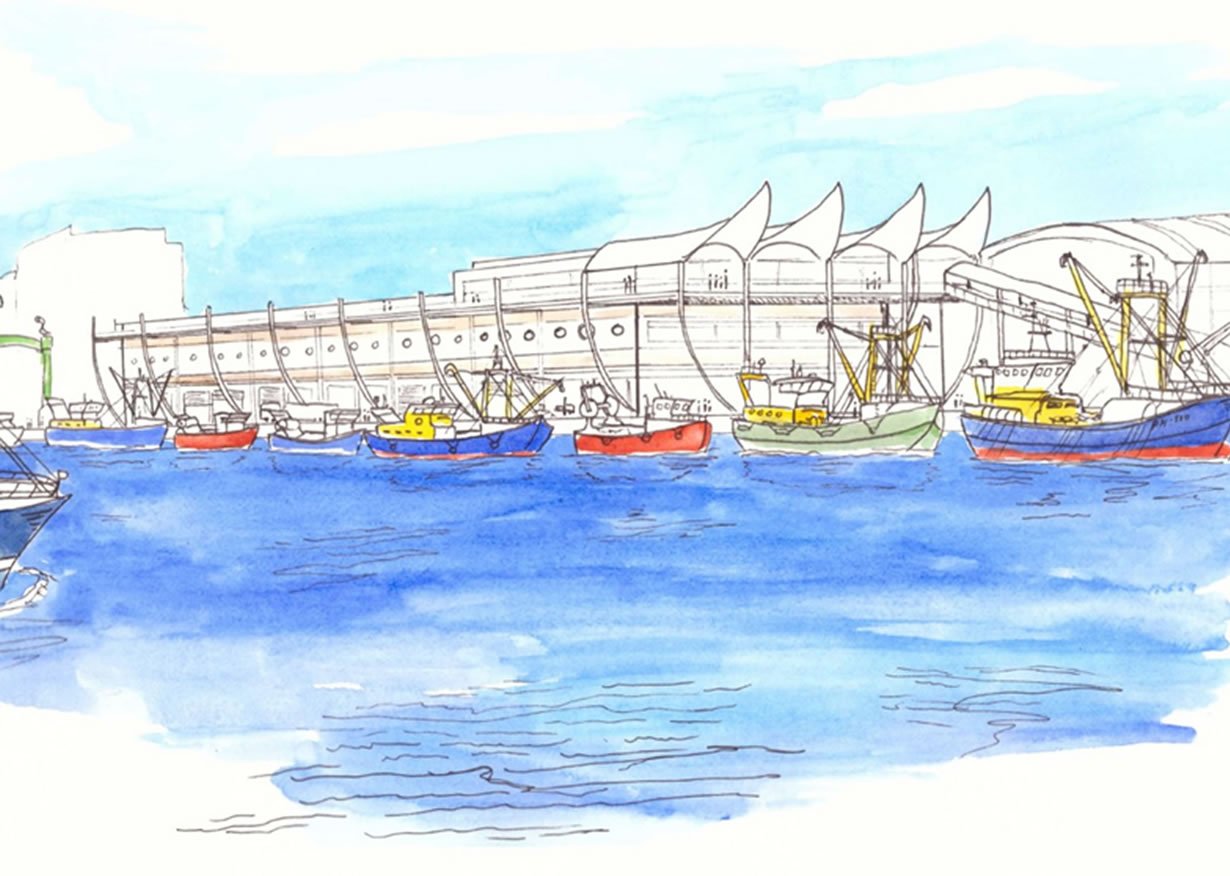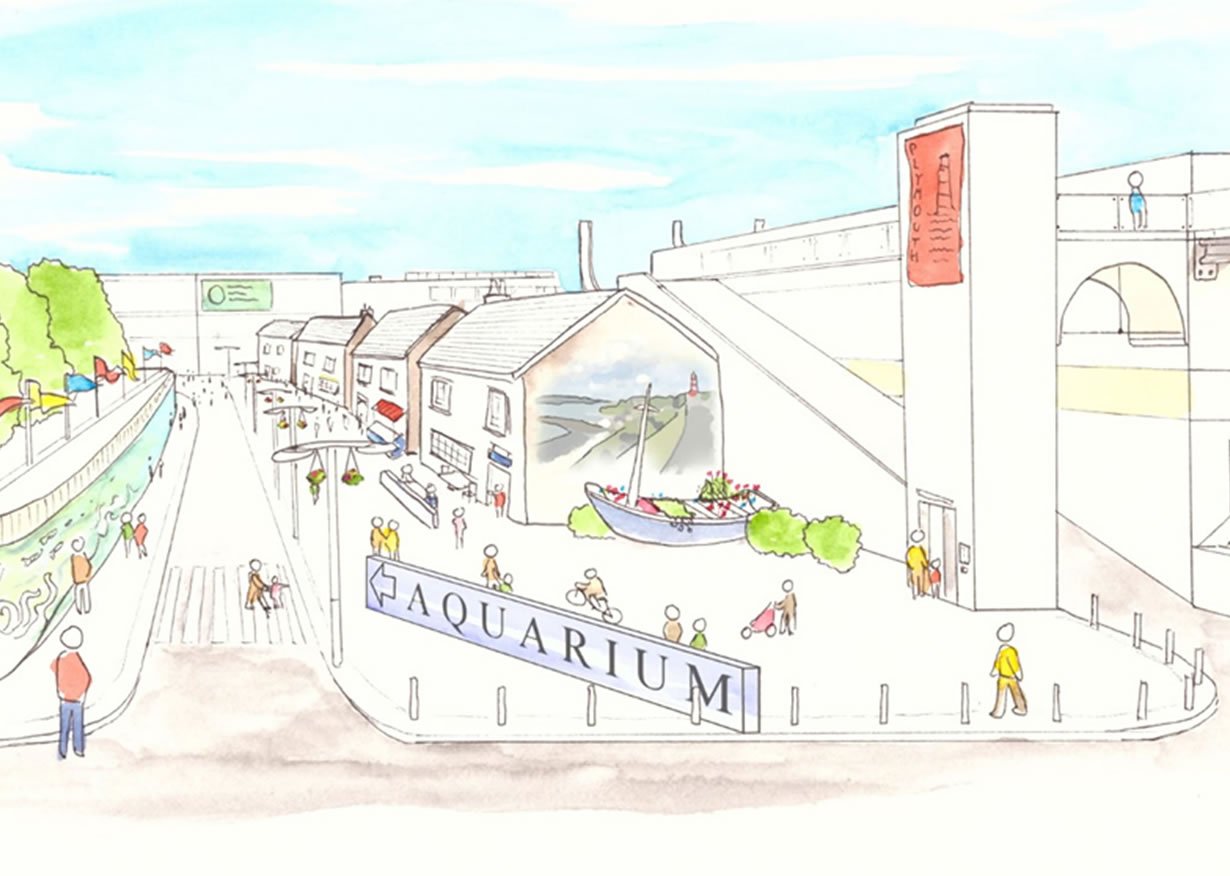Interacting with the public.
Viewing Platform.
The lift at the eastern entrance to the facility allows the public safe access to view the busy port without having to walk through it at ground level. The glass lined viewing platform wraps around the 2/3rd floor allowing the public to view the goings on from vessels landing fresh fish to fishermen working on their gear. Transfers on the glass explain the different types of vessels and catches from these vessels as the visitors walk their way around the building. From the south eastern corner a walkway descends to front entrance of the Aquarium. Access to the restaurant and seafood school is provided from this walkway.
Fishery School.
The fishery school mentioned earlier will not only provide industry required training of chefs, fish merchants, trainees and apprentices, but courses for the public to attend to learn how to process and cook the multitude of species caught off Plymouth. These could include Dover Sole, Bass, Monkfish, John Dory, Lemon Sole, Pollack, Haddock, Whiting, Conger, Squid, Cuttlefish and many more.
Fish Restaurant.
The fish restaurant and terrace located on the top floor of the structure with a deck to the outside will offer the ultimate opportunity to sample some of the best fish in the world landed here in Plymouth with amazing views of the harbour and Plymouth Sound.
Schools Programme.
The maritime training school, fisheries school, associated classrooms and auction house will offer all local schools the opportunity to visit and learn about the industry and potential careers in a safe environment. From fisherman to chef, Captain of seagoing vessel to engineer, young imaginations can be sparked and inspired by a truly interactive experience.
Cottage row
Fisherman’s Café.
Somewhere for a simple mackerel bap, bacon sandwich, cup of tea and a good place to listen out for some fish tales from local fishermen.
Fish Shop.
Locally caught fish, a place to buy your Plymouth landed fish from our local merchants.
Fisherman’s Cottage Museum.
An inside look at how fisherman lived and worked in years gone by. Think Flambards oldy world village, fishing style!
RNLI/Fisherman’s Mission.
Two very important fishing charities. It is hoped that one could be attracted to take on space as a shop for their charity and perhaps offer a base for their services to fishermen.








